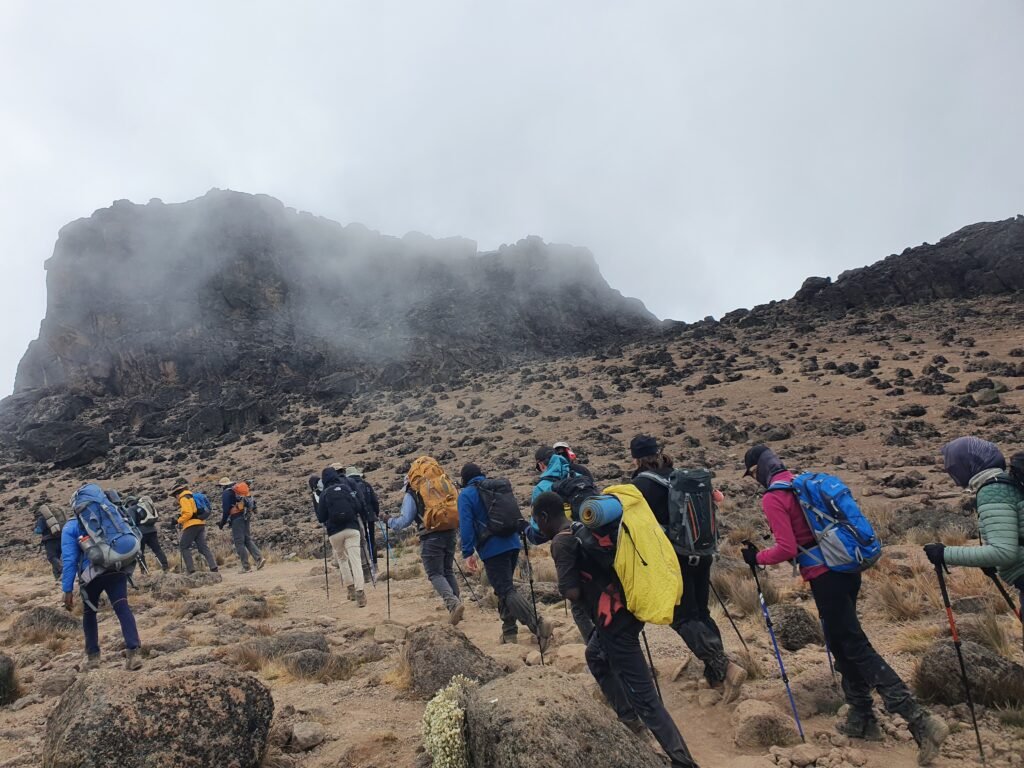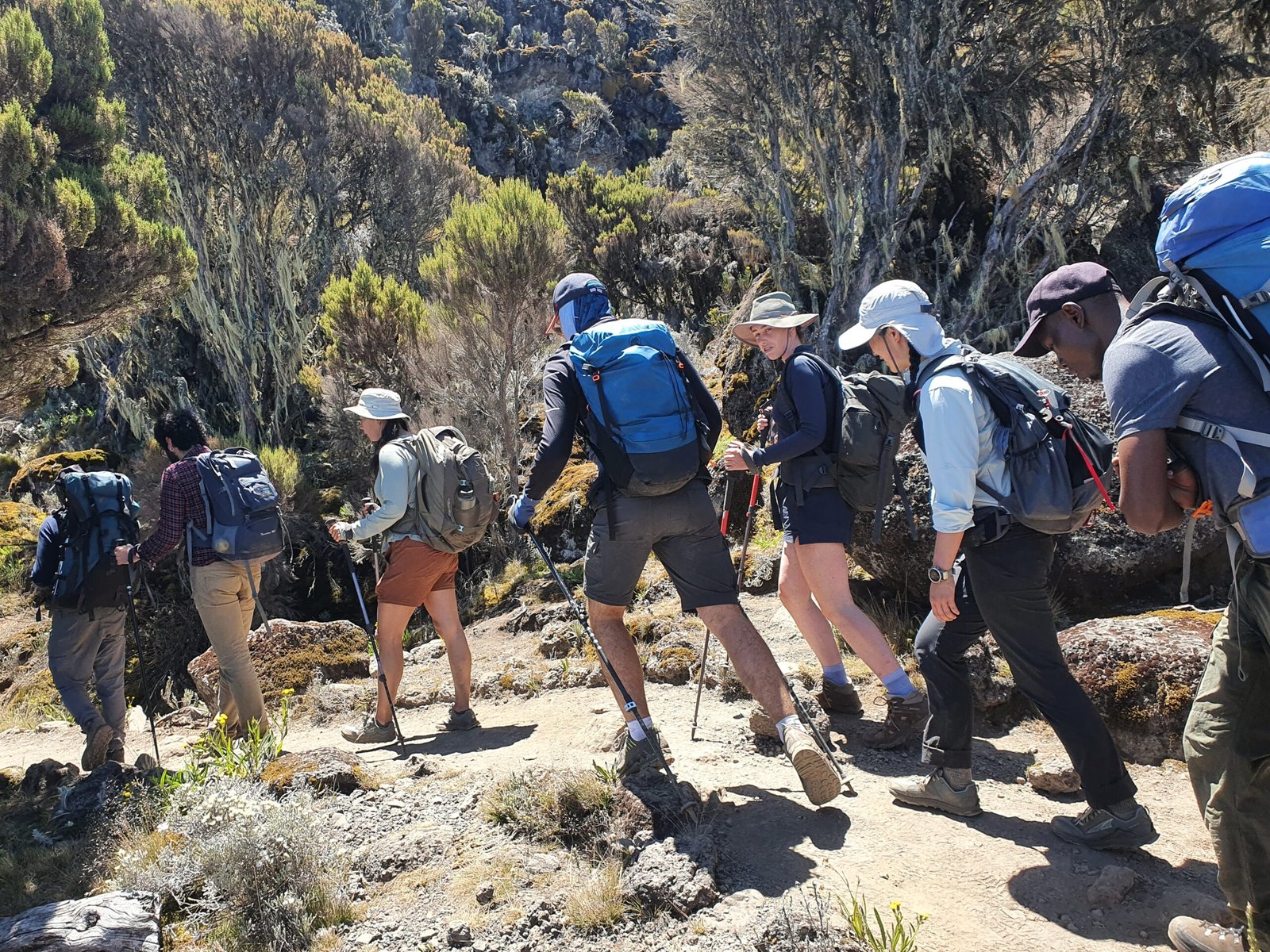Climbing Mount Kilimanjaro, the highest peak in Africa, is a dream for many adventurers. Standing at 5,895 meters (19,341 feet), this iconic mountain offers an incredible experience for those who are prepared. However, summiting Kilimanjaro is no easy task, and proper preparation is key to success. In this guide, we’ll cover everything you need to know about how to prepare for climbing Mount Kilimanjaro, including fitness training, acclimatization, packing essentials, and more.
Start planning your Kilimanjaro climb with expert advice.

1. Understand the Kilimanjaro Routes
Mount Kilimanjaro offers several different routes to the summit, each varying in difficulty, scenery, and acclimatization opportunities. Choosing the right route is an important part of preparing for your climb.
Popular Kilimanjaro Routes:
- Machame Route: Known as the “Whiskey Route,” it’s popular for its scenic views and good acclimatization profile. This route usually takes 6-7 days.
- Marangu Route: The “Coca-Cola Route” is considered easier, with the option to sleep in huts instead of tents. It’s also shorter, taking 5-6 days.
- Lemosho Route: A longer route that’s less crowded, offering beautiful scenery and a higher success rate due to better acclimatization (7-8 days).
Learn more about the different Kilimanjaro routes and their benefits.
2. Build Your Fitness for the Climb
Climbing Kilimanjaro requires a moderate level of fitness, especially because of the long days of hiking and the altitude. While it’s not a technical climb, physical endurance and strength are key to reaching the summit.
Fitness Tips for Kilimanjaro:
- Cardio Training: Focus on building your stamina with cardio exercises like running, cycling, and swimming. Aim for at least 4-5 days of cardio training per week.
- Hiking Practice: If possible, train on hills or mountains to simulate the long trekking days. Wear the boots and backpack you plan to use on the climb.
- Strength Training: Incorporate leg workouts like squats, lunges, and step-ups to strengthen the muscles you’ll rely on during the ascent.
Discover effective training plans for climbing Kilimanjaro.
3. Acclimatization is Key
One of the biggest challenges of climbing Kilimanjaro is dealing with the altitude. As you ascend, the air gets thinner, and your body has to work harder to get enough oxygen. Proper acclimatization is crucial to avoid altitude sickness.
How to Acclimatize on Kilimanjaro:
- Climb Slowly: The golden rule is to “climb high, sleep low.” Take your time during the day, allowing your body to adjust to the altitude.
- Stay Hydrated: Drink plenty of water (at least 3-4 liters a day) to help your body acclimatize.
- Choose the Right Route: Routes like Lemosho and Machame allow for a gradual ascent, improving your chances of adjusting to the altitude.
Read more about managing altitude on Kilimanjaro.
4. Packing Essentials for Kilimanjaro
Packing the right gear is essential for a successful Kilimanjaro climb. You’ll need clothing that can handle the extreme temperature changes, from hot days at lower altitudes to freezing temperatures near the summit.
Kilimanjaro Packing List:
- Layered Clothing: Bring moisture-wicking base layers, insulating mid-layers, and a waterproof outer shell. This will allow you to adjust to the varying temperatures.
- Hiking Boots: Invest in sturdy, waterproof boots that you’ve already broken in. Comfort is key for long trekking days.
- Sleeping Bag: A four-season sleeping bag is essential for staying warm at higher altitudes.
- Trekking Poles: These help reduce strain on your knees, especially during descents.
Get the full Kilimanjaro packing checklist here.
5. Nutrition and Hydration During the Climb
Keeping your energy levels up during the climb is essential, as you’ll be burning a lot of calories each day. Kilimanjaro trekking companies typically provide meals, but you should also bring snacks to fuel your body along the way.
Nutrition Tips:
- Eat Regularly: Even if you lose your appetite at higher altitudes, it’s important to keep eating small meals to maintain energy.
- Pack Snacks: Bring high-energy snacks like nuts, energy bars, and dried fruit to eat during the hike.
- Stay Hydrated: Dehydration is a common issue on Kilimanjaro. Bring a hydration bladder or water bottles and aim to drink at least 3 liters of water daily.
Learn more about nutrition and hydration for high-altitude trekking.
6. Dealing with Altitude Sickness
Altitude sickness, or acute mountain sickness (AMS), is a real concern when climbing Kilimanjaro. Symptoms can range from mild headaches and nausea to more serious conditions like high altitude pulmonary edema (HAPE) or high altitude cerebral edema (HACE).
Signs of Altitude Sickness:
- Headache: Often one of the first signs of AMS.
- Nausea and Loss of Appetite: Common symptoms as your body struggles to adjust.
- Fatigue: Feeling unusually tired despite rest is another warning sign.
How to Prevent Altitude Sickness:
- Climb Slowly: Ascend gradually, giving your body time to adjust to the altitude.
- Take Diamox: Some climbers take Diamox to help prevent symptoms of altitude sickness, but consult your doctor before using it.
- Listen to Your Body: If symptoms worsen, don’t hesitate to descend to a lower altitude for safety.
Read more about preventing altitude sickness.
7. Mental Preparation for the Climb
Climbing Kilimanjaro is not just a physical challenge—it’s a mental one, too. Reaching the summit requires determination and mental toughness, especially during the final push to Uhuru Peak.
Mental Strategies for Success:
- Break the Climb into Sections: Focus on reaching one camp at a time, rather than thinking about the summit from the start.
- Stay Positive: Keep a positive mindset and encourage fellow climbers. Support from your group can make a big difference.
- Visualize Your Success: Many climbers find it helpful to visualize standing on the summit to stay motivated.
Learn more about mental preparation for Kilimanjaro.
8. Hire the Right Guide and Support Team
Climbing Kilimanjaro requires a licensed guide, and the quality of your guide and support team can make or break your experience. Look for reputable operators who prioritize safety, provide quality equipment, and have experienced guides.
Choosing a Kilimanjaro Operator:
- Reputation: Research reviews and recommendations to find a trusted guide company.
- Safety Record: Make sure the company prioritizes safety, with a solid plan for handling altitude sickness and other potential issues.
- Porters and Crew: Your porters will carry much of your gear, so ensure that the company treats them fairly and follows ethical guidelines.
Find expert Kilimanjaro guides and tours.
9. Final Thoughts on Preparing for Kilimanjaro
Climbing Mount Kilimanjaro is a life-changing experience that requires thorough preparation. By focusing on your physical fitness, packing the right gear, acclimatizing properly, and hiring a trustworthy guide, you’ll increase your chances of reaching the summit successfully. Remember, it’s not just about making it to the top but enjoying the journey and the incredible landscapes along the way.
For personalized guidance and tailored Kilimanjaro tours, visit Kilimanjaro Climb Specialist or Eddy Tours & Safaris.

